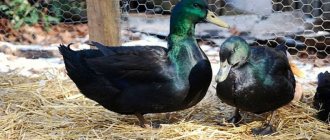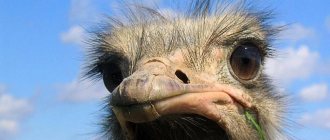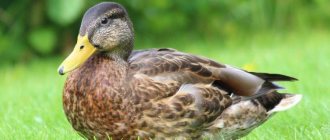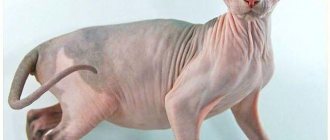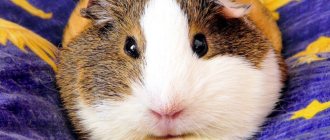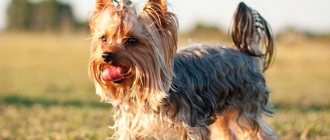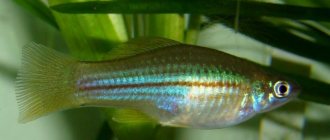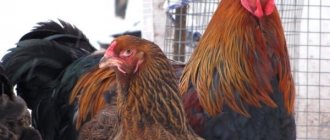Home » Articles about chickens » The most egg-laying chicken breeds
By choosing for breeding one or several breeds of chickens that are included in the category of the most egg-producing ones, you can earn income for several years. Raising laying hens is profitable, although they are not without their drawbacks. For the most part, birds with high egg production are not very heavy. It is extremely rare that they become brood hens.
general description
In addition to high productivity, the most egg-laying chicken breeds have other common characteristics. They have:
- light frame;
- soft voluminous belly;
- flexible ends of the pubic bones, the distance between which is 4-5 fingers;
- flat, wide back;
- deep chest;
- legs set wide apart;
- medium or light weight (usually no more than 2.5 kg);
- calm character.
With the onset of the productive period, good laying hens consistently lighten parts of their body. First, the areas around the cloaca and eyes turn pale, then the turn of the ear lobes, beak and metatarsus comes.
High line
The most egg-laying chicken breed was bred in the USA - breeding work was carried out at the High-Line International scientific center. It is suitable for home and industrial breeding. Over the course of a year, hens lay up to 340 eggs with strong white or brown shells (the color depends on the color of the plumage). Weight 1 pc. – 65 g. Safety of young animals – up to 98%.
The birds are unpretentious and are inexpensive to maintain. Laying hens weigh 1.5-1.8 kg, roosters - 2-2.5 kg. The body is small, triangular in shape. The tail is bushy and carried high. The head is small, the neck is short. The comb has a leaf-shaped shape. Its color is darker than skin. The number of teeth is 5 or 6. The metatarsus and beak are yellow. Color white or brown.
Incubation
Breeding chickens using an incubator is the preferred, and in some cases, the only way to breed egg-laying breeds and crosses. There are no specific features of incubation.
Chick development by day. Signs of correct and incorrect development of the embryo
Read
How to choose the right eggs to put in the incubator?
Answer
Brooders for chickens in different price segments. For hobbyists, farmers and industry
Top – 9
Review of industrial and amateur incubators for breeding chickens
Top – 15
Loman brown
The category of the most egg-laying breeds includes Loman Brown laying hens bred in Germany. They were obtained by crossing hybrids of 1 line from 4 breeds. Birds lay up to 320 eggs per year. Weight 1 pc. is 60-65 g. Puberty occurs at 5 months. The viability of chickens is 98%. Chickens weigh up to 2 kg. They are unpretentious in content.
The plumage is brown-fawn, the tail is lighter along the edge. The fluff is white. The birds are harmoniously built, have a convex chest, a straight back, and a soft belly. Their comb and earrings are red.
conclusions
- Laying hens (laying eggs) have a low body weight and are not able to hatch offspring, but have high egg production rates.
- Egg production is affected by the age of the bird, housing conditions and characteristics of the breed.
- The most profitable egg-type chickens (to buy in Belarus, Ukraine, the Moscow region, Tyumen, Dushanbe) to keep at the dacha are Leghorns, Loman Brown, Russian White Hen and Tetra.
- It is advisable for beginners to purchase/take highly productive crosses with a universal direction of productivity.
Find out which breed of laying hens to choose for beginners here.
Dominant
The breed was bred in the Czech Republic. Over the course of a year, the hen lays 300-310 eggs weighing up to 70 g. Sexual maturity occurs at 5-6 months. The survival rate of chickens reaches 97%. Females fatten up to 2.5 kg, roosters – up to 3.5 kg. Birds slowly gain weight - they grow up to 1.5 years. They have a strong build, short legs, small wings, and a neat tail. The head is small, the crest is scarlet, large, leaf-shaped. The color of the plumage is varied - 12 subspecies are known.
Isa brown
The birds were bred in France. They were named after the abbreviation of the institute where the breeding work was carried out - ISA (Institut de Sélection Animale). This is one of the most unpretentious egg-laying breeds. Chickens are adapted to different types of climate. Over the course of a year, laying hens produce about 300 eggs weighing 60-63 g. The shell is brown. The safety of young animals reaches 94%. Body weight – up to 1.9 kg. The exterior is standard for laying hens. Their body is compact, with a voluminous belly. The head is small, the crest is neat and small.
Araucana
Chickens with blue pigment on the surface of the shell are known to Europeans from descriptions that are just under half a millennium old. The bird has long been considered an exotic and mysterious stranger to the whole world, except the shores of South America.
In 1920, in The Hague, Araucana was presented to the world community as part of a nomination in the World Scientific Poultry Association. The characteristics of the overseas tribe quickly won the hearts of European poultry farmers.
Further fruitful work of breeders delving into the unusual genetic findings of birds has led to the fact that birds can now be bred in several current standards.
- Character
Experts characterize a chick's temperament with very contradictory definitions: from peaceful to aggressive. Girls for the most part are calm, but their suitors are irreconcilable with any stranger, especially during the period of mating battles - in the spring, and may well allow themselves to bully even the owner if they are driven by suspicion of a threat to the herd.
- Productivity
One of the key reasons why poultry keepers get the beautiful Araucan is the peculiar tinting of the shell - blue or greenish. With a competent approach to maintenance, the mother stock is capable of laying 160-180 specimens in twelve months.
The period of sexual maturity begins at six months of age, however, reviews also describe “late-ripening” cases when individuals begin to lay eggs only towards the end of the first year of life.
Leghorn
Chickens of this breed have a light weight - it rarely exceeds 1.7 kg. They were bred in America. Each hen can produce up to 300 eggs per year. Weight 1 pc. – 60 g. The plumage of birds has a variety of colors, the most common are white and variegated birds. The shell color is white or brown.
The body of the chickens is wedge-shaped, the chest is wide, convex, and the belly is large. The head is small, the comb is red, and lies on one side. The earrings are red, round. Leghorns have a restless character.
Hamburg chickens - photo
This is a very old breed that has an incredibly elegant appearance. Almost nothing is known about its origin. Hamburg chickens have:
- long body;
- long and lush plumage;
- small beak of a bluish tint;
- pinkish comb with a pronounced tooth in the center;
- light and thin, not very strong skeleton;
- bright red small earrings;
- Red eyes;
- well-developed strong and long feathers;
- large and voluminous tail.
The plumage of birds is very beautiful. Most often, hens are found with silver-spotted plumage. Roosters are distinguished by black plumage with a green tint and a silver-white mane. Day old chicks have a very beautiful color.
The birds are incredibly active, making them quite difficult to catch. That is why the mass of an individual is only about one and a half kilograms . In one year, a laying hen produces from 200 to 220 eggs, the weight of which is 50 grams. The young fledge quickly and have good fattening qualities. When free-range, chickens are able to obtain their own food.
Tetra
This is one of the most egg-laying chicken breeds used in households. Birds mature very early - they begin to lay eggs at 4-5 months. The first laid eggs weigh about 50 g. Over time, the figure increases to 60-65 g. The shell is brown. Annual productivity – 320 eggs.
The advantages of the tetra are good meat productivity. The weight of laying hens can reach 2.5 kg, roosters - 3.5 kg. The breed is autosex - at one day of age, the brood can be divided into roosters and hens based on color. Adults have brown plumage - it can be light or dark. The body is compact, tightly knit.
Breed selection and herd formation
When choosing egg-laying hens, the future owner must first of all decide for what purpose he is getting pets and in what mode he intends to further form a poultry flock. If your plans are solely to supply your family with fresh eggs, you can give preference to a productive breed or cross that is available for sale at a nearby farm or poultry farm. If you have a home incubator, you can purchase fertilized eggs (this will cost the least) and hatch the chickens yourself. Purchasing day-old or slightly grown chicks requires relatively large expenses, but makes it possible to avoid losses during hatching. Varieties of chickens characterized by pronounced autosex of young animals (for example, “Rhode Island”, “Tetra”, “Loman Brown”, etc.) allow you to immediately purchase hens and cockerels in the ratio necessary for the correct formation of the breed.
Autosexness (different colors of down, the presence of spots and stripes) helps determine the sex of a chicken already on the first day
Many summer residents prefer not to waste any effort at all on raising young egg-laying hens. From spring to early autumn, most poultry farms sell so-called “pulls” (young chickens about 1.5 months old) of the most popular varieties. Their purchase requires a more significant investment. But this approach, with proper care and feeding, almost completely eliminates the death of pets. A grown bird is easier to feed and maintain, and if purchased in the spring, it can begin to lay eggs at the end of summer.
An owner who intends to renew the flock in the future using his “own” chickens must be concerned not only with acquiring a sufficient number of cockerels (the optimal ratio is considered to be 1 male per 8-10 females), it is also important to take into account the ability of the chickens of the chosen breed to incubate. Many pure egg varieties by nature, or rather through the efforts of breeders, are deprived of maternal instinct in order to maintain stable productivity. To ensure their reproduction, the farm must have either a household incubator or chickens of other breeds that can act as brood hens.
Females of meat-egg breeds are considered the best brood hens.
There are several opinions regarding the mandatory presence of roosters in the herd. Some owners believe that in the absence of a male, chickens cannot lay eggs at all or lay eggs of poor quality. It is a myth. The presence of a rooster nearby does not in any way affect the productivity of laying hens or the quality of the eggs they lay. True, without a male, the eggs are unfertilized. They are not suitable for breeding offspring, but when forming a herd in the mode of purchasing new “pullets” to replace discarded ones, fertilized eggs are not required. However, this does not mean that a rooster is not needed in the herd at all. The male in the chicken coop plays the role of “organizer” and protector. With it, chickens suffer less from stress, do not quarrel, do not run away, and do not try to fly over the fence of the range.
Experienced poultry farmers claim that a maleless chicken flock sometimes produces an “informal leader.” One of the hens begins to “command” her companions and becomes too lively and aggressive. At the same time, she completely stops laying eggs. This fact also indicates that the presence of a rooster in the yard is important for the normal life of poultry.
Crosses obtained through complex hybridization are not intended for breeding at home - their complex of improved characteristics is not inherited by offspring
Some owners keep egg-laying chickens not only for edible products, but also for the purpose of purebred breeding. This type of activity requires both significant costs and serious experience. On the other hand, it can become a source of good income, since hatching eggs and chicks of rare and beautiful varieties of chickens, despite the very high cost, are extremely in demand among amateur poultry farmers.
Hisex
Highsex chickens can also be called the most egg-laying breed of chickens in the household. 2 lines have been bred, differing in plumage color and productivity.
Birds with white plumage are smaller than the brown variety (1.8 and 2.6 kg, respectively). Egg production in white highsex is about 300 pieces per year, weighing 60 g. In brown chickens, the figure is higher, and the weight of the eggs is greater (70 g). Otherwise they are similar. Chickens have a compact body, a short straight back, a bushy tail, a wide chest, a long neck, and a small head. The comb is large, hanging to one side. The feather cover is of high quality - it is dense, soft, silky.
Egg production comparison
The egg production of chickens depends on many factors. This indicator is influenced by the age of the bird, housing conditions, climate in the region and quality of feed. In addition, all breeds are usually divided into three main groups, within which productivity also differs. The table shows a comparison of breed types based on egg production rates.
| Productivity type | Average egg production, eggs/year |
| Meat | 100-120 |
| Egg | from 250 |
| Universal | 200-240 |
Russian white
When deciding which breed is the most egg-producing, it is worth remembering domestic chickens. On the basis of Leghorns, in the middle of the 20th century, Russian Whites were bred, characterized by high egg productivity. Laying hens are perfectly adapted to the conditions of the Russian climate and the domestic food supply. They can be grown in private farms and poultry farms.
Russian Whites have a beautiful exterior - the bird's body is compact, with a wide back, well-developed chest, and strong wings. The neck is thickened. The head is small. The plumage is dense and white. The character is calm. The weight of females does not exceed 2 kg, males – 3 kg. Egg production is high - 250-260 eggs per year. It does not fall even in the cold season. Sexual maturity occurs at 5 months.
Content Features
To achieve the best performance, you must strictly adhere to the bird care recommendations. The key to success is proper feeding and living conditions.
Accommodation
For egg-laying birds, the following indicators are extremely important:
- illumination at which the length of daylight hours will be at least 12 hours;
- temperature not lower than +6°C.
Important! Egg production at temperatures above +30
°
C drops by 30%, and when the temperature drops below +5
°
C
-
by 15%.
To maintain the required level of illumination, additional lamps are used. For free walking, it is necessary to provide the birds with an aviary with a protective fence, drinking bowls and shelter from the sun.
Feeding
Violation of the diet and composition of the diet leads not only to a quantitative, but also to a qualitative decrease in egg production.
For laying hens the following conditions are required:
- feeding on a schedule;
- increasing the diet in winter and during the molting period;
- improved mineral composition of the feed, especially calcium and phosphorus;
- access to fresh greens; in winter you can give dried grass.
Shaver
The Dutch company Hendrix Genetics Company developed a hybrid Shaver breed. There are 3 known varieties that differ in the color of their plumage - it can be white, black, or red. The chickens are elegant, with a small tail, small head, and short comb. The skin of the legs is initially yellow, later it becomes gray. Laying hens mature early - the first egg laying can occur as early as 4 months. Annual productivity – 250 pieces/year. The weight of eggs increases with age - from 45 to 60 g. Laying hens are fattened up to 2 kg.
Minorca
The Minorca chicken breed comes from Spain; breeding work was continued in England. The Spanish variety has blue-black or brown-black plumage and gray feet. The British subspecies has white feathers and pink feet. The exterior is interesting - the chest is convex, the posture is proud, the back has a beautiful curve, the tail is long. The comb is red, the earrings are white.
Laying hens begin laying eggs at 5 months and lay up to 200 eggs. in year. Average weight 1 pc. – 80 g. Spanish women are smaller than British women – 2.6 and 3.5 kg, respectively. Minorcas are poorly adapted to cold climates and are timid - they cannot tolerate sharp sounds.
Ukrainian earflaps
In common people they simply call it “earflaps”. One of the oldest universal breeds. Live weight is a maximum of 2.8 kg, egg production is up to 160-170 eggs per year. Unpretentiousness and endurance, resistance to changes in temperature conditions are noted. The colors come in a variety of colors, from brown to black.
Characteristics:
- “beard” as a distinctive feature;
- fast pace of adaptation;
- frost resistance;
- lack of “earrings” in chickens;
- developed instinct of motherhood;
- resistance to diseases.
Productivity decreases towards the end of the first year of life. Females begin laying eggs at six months of age.
